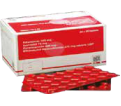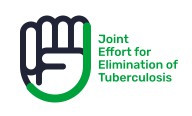CHALLENGES
ELIMINATION OF TB BY 2025 IS ONLY POSSIBLE WITH DOCTORS’ SUPPORT
Project JEET offers doctors all the support they need to succeed - from notification to treatment completion.
The hub agent will ensure notifications of all patients on the doctor’s behalf








Treatment coordinator will sensitize the patient and their family members

Hub agent will coordinate with the Sample Collection & Transport (SCT) agent for sample pick up for testing
REFERENCES
1. Global Tuberculosis Report – 2018. From the website of the World Health Organization. Available at:
https://www.who.int/tb/publications/global_report/en/; Accessed on: Oct. 15, 2018.
2. Dandona L, Dandona R, Kumar GA, et al. Nations within a nation: variations in epidemiological transition across the states of
India, 1990–2016 in the Global Burden of Disease Study. The Lancet. 2017;390(10111):2437-2460.
3. National Strategic Plan for Tuberculosis Elimination 2017–2025. Revised National Tuberculosis Control Programme.
Available at: https://tbcindia.gov.in/WriteReadData/NSP%20Draft%2020.02.2017%201.pdf; Accessed on: Sep. 11, 2018.
4. World TB Day: A Conversation with a TB Warrior from India. Available at:
https://longitudeprize.org/blog-post/world-tb-day-conversation-tb-warrior-india; Accessed on: Sep. 11, 2018.
5. Uplekar M, Weil D, Lonnroth K, et al. WHO’s new End TB Strategy. The Lancet. 2015;385(9979):1799-1801.
6. Pai M, Bhaumik S, Bhuyan SS. India’s Plan to Eliminate Tuberculosis by 2025: Converting Rhetoric into
Reality. BMJ Global Health. 2017;2:e000326.
7. Chp. 2: TB Diagnosis Today: The Search for Improved Diagnostics continues. In: Pathways to Better Diagnostics for
Tuberculosis: A Blueprint for the Development of TB Diagnostics. By the New Diagnostics Working Group of the Stop TB
Partnership. Joint publication of Stop TB Partnership and World Health Organization. Available at:
http://www.stoptb.org/wg/new_diagnostics/assets/documents/blueprinttb_annex_web.pdf; Accessed on: Sep. 11, 2018.
8. Anand T, Babu R, Jacob AG, et al. Enhancing the Role of Private Practitioners in Tuberculosis Prevention and Care Activities
in India. Lung India. 2017;34:538-44.
9. The Gazette of India. Available at: http://egazette.nic.in/WriteReadData/2018/183924.pdf; Accessed on: Sep. 18, 2018.
10. Satpati M, Nagaraja SB, Shewade HD, et al. TB Notification from Private Health Sector in Delhi, India: Challenges
encountered by Programme Personnel and Private Health Care Providers. Tuberculosis Research and Treatment.
2017;2017:Article ID 6346892.
11. Dutta A, Pattanaik S, Choudhury R, et al. Impact of Involvement of Non-formal Health Providers on TB Case Notification
among Migrant Slum-dwelling Populations in Odisha, India. PLoS ONE. 13(5):e0196067.
12. Srivastava K, Gupta A, Saxena R, et al. A Study on Non-compliance in Tuberculosis Cases towards the Directly Observed
Treatment Short Course under RNTCP in Kanpur Nagar. Int J Community Med Public Health. 2017;4(12):4485-4489

SUBSCRIBE TO OUR NEWSLETTER
To receive latest news & updates




